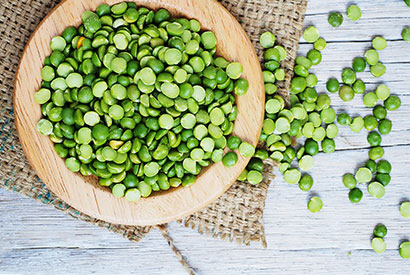
As a certified operation, your company has identified and is constantly monitoring all of its organic control points. But how do you ensure organic integrity is maintained in your supply chain? For example, if you import ingredients, are you sure that they are not treated at the border with prohibited pesticides? Do you trust the brokers who are not required to be certified to source your ingredients from certified suppliers? Are you ready to prove this at your next organic inspection?
On August 11, 2017 the U.S. Agricultural Marketing Service (AMS) National Organic Program (NOP) issued a notification to all accredited certifiers regarding an ongoing fraud investigation that involves noncertified brokers and identifies a lack of control of organic integrity at ports of entry. The notification requires all certifiers in the U.S. to immediately implement additional control measures for their certified operations that directly import organic corn, soy, edible dry beans, wheat, flax or sunflower from:
- Kazakhstan
- Moldova
- Romania
- Russia
- Turkey
- Ukraine
QAI is working with clients utilizing suppliers from these high-risk regions to ensure compliance of the organic products, including testing for the presence of pesticide residue and GMOs on crops listed in the NOP notification. However, fraud is not likely limited to these regions and commodities. So what can you do to ensure your foreign suppliers are protecting organic integrity?
The best approach is to think like an organic inspector: Follow the links in your supply chain to the last certified operation and make sure suppliers are ensuring organic integrity is maintained when products are in transit. QAI inspectors verify the audit trail and how records connect the product from receiving back to the certified source. Within these documents, they look for confirmation that organic integrity was maintained along the way. Typically, the records verified include:
- Sales records for all finished products
- Storage documentation including off-site warehouses
- Production/batch and labeling records
- Receiving logs
- Bills of lading (BOLs) and shipping documents
- Purchase documents and supplier invoices
- Port authority documents including phytosanitary certificates
- The supplier’s organic certificate
- Other documents as applicable to your operation
Perform your own traceback audits and make sure that each document has a linking element, such as the product lot number, that demonstrates the product received is the same product that was shipped from the certified supplier. Along the way, note if the ingredient traveled across borders and was stored or moved at a port of entry. How was organic integrity protected? Remember that unless an imported product is accompanied by a phytosanitary certificate, it is at risk of fumigation at the port of entry. QAI inspectors are now going to request these certificates when they should be available. Reference the USDA Animal and Plant Health Inspection Service’s (APHIS) Fruit and Vegetables Import Requirement (FAVIR) database which identifies phytosanitary requirements by plant, plant part and country of origin. The pesticides used to treat infested imports are not organic compliant and, when treated, the organic status of the product is lost. Residues from these pesticides are likely detectable.
Did your ingredients get sourced by a non-certified broker or trader? If so, do the documents provided by the broker or trader correctly identify your commodities as organic and do they clearly link back to the certified supplier you listed in your organic system plan? Establishing these links can be challenging. But you do not want to wait until the organic inspection to find out that the audit trail is deficient. The worst case scenario is that there is no link and that your company may be a fraud victim. Because of that, some companies choose to work only with certified organic traders, brokers and distributors to minimize risk.
Much of the burden to ensure organic integrity is maintained during transit falls on the supplier, but the responsibility to ensure the supplier has done this is yours. Your company has the ability to require additional and specific measures from these suppliers. This could include conspicuously labeling containers and shipping documents with the word “organic” or providing handling instructions. Perhaps your company conducts supplier audits for food safety. Could these audits also address organic integrity issues?
What else can you do to ensure the products and ingredients you are purchasing are organic? While not required, many companies implement their own pesticide residue testing programs. Become familiar with NOP requirements for residue testing by reviewing the NOP Program Handbook. These issues are relevant for all organic operations; international organic standards such as Canada and the EU have similar requirements.
QAI is dedicated to ensuring the integrity of the organic supply chain. However, as a certified entity, your company is ever present and able to put the onus on your suppliers to demonstrate what you are buying is indeed organic. Don’t wait for your QAI inspector to tell you otherwise!
